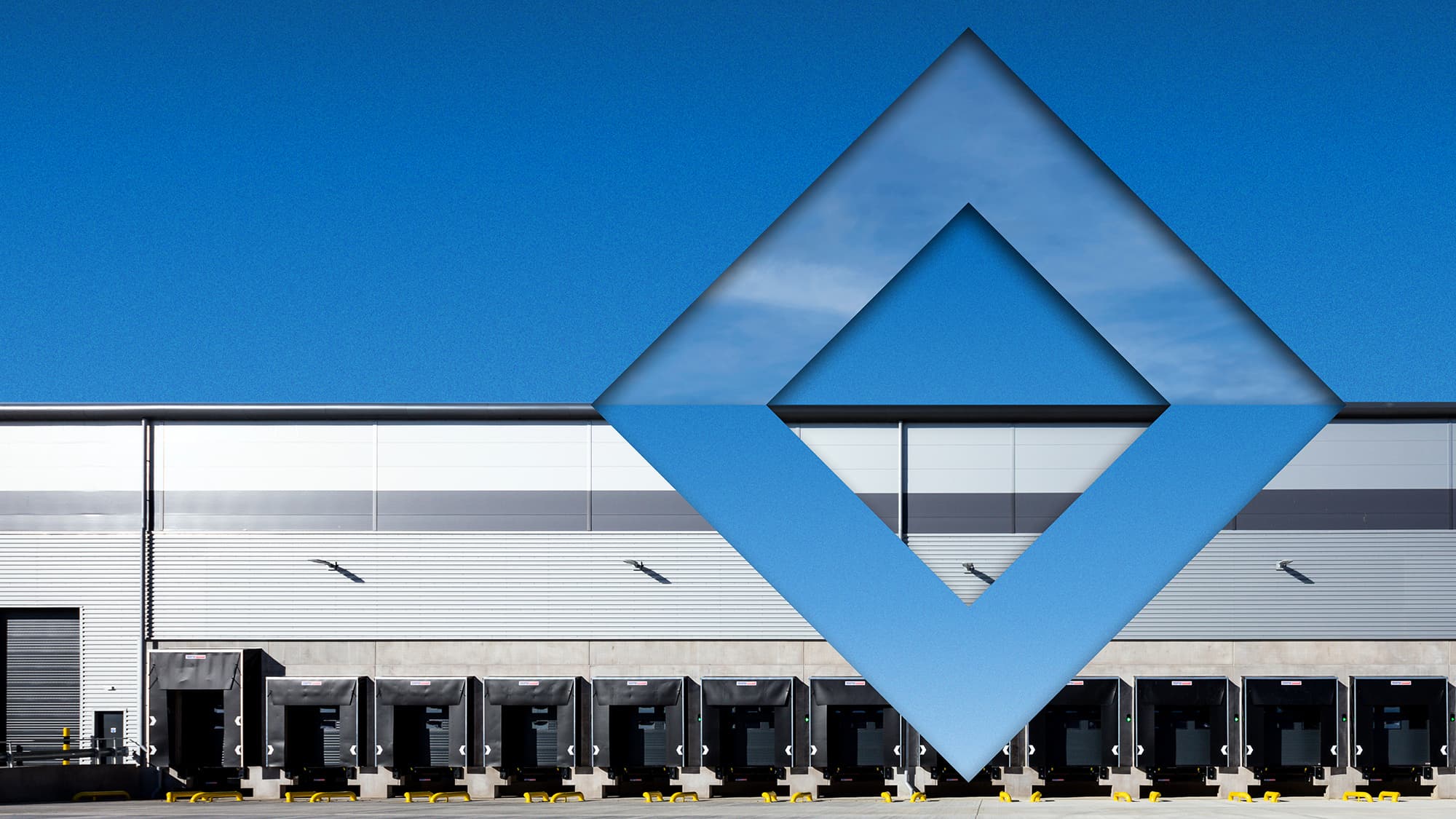
5 Things You Need to Know About Big Box Logistics In Q3 2023
Big Box logistics take-up stands at 16.7 million sq ft at end Q3’23 - close to pre-Covid average of 19 million sq ft
The DTRE Big Box Vacancy rate (all units over 100,000 sq ft) stands at 6.2% up from 3.5% at end of 2022
Q3 investment volumes reached £1.15bn. This takes the annual total so far to just over £5.2bn
Annualised ‘All Industrial’ rental growth is currently running at 6.8%
The weight of global capital continuing to target the sector coupled with the limited stock coming up for sale will maintain values
Occupational
The annual summer slowdown that occurs during Q3 has unfortunately not helped in boosting this quarter’s take-up figures which reached just shy of 5 million sq ft. As a result of this year’s slowdown, occupational demand has now reverted back to it’s pre-pandemic trend line, after the Covid-induced boom.
Nine months into 2023 and take-up for Big Box logistics units over 100,000 sq ft stands at 16.7 million sq ft, down 41% year-on-year. However, as mentioned this is close to the preCovid (2009 19) average of 19 million sq ft. Measuring take-up on a quarterly basis shows that since Q1’22 take-up has averaged out at 7.5 million sq ft, similar to the pre-Covid (2009-19) quarterly average of 7.4 million sq ft.
What has caused this reversion back to pre-Covid trends? This can largely be attributed to three things. Firstly, due to the macro environment, decision-making processes within businesses are taking much longer. That is apparent in the take-up numbers as well as current requirements. We currently have 9.2 million sq ft of space currently under offer, however, of that figure, 40% of it was also under offer three months ago when I last wrote this report.

Secondly, the growth in online retail sales has fallen back to its pre-pandemic trend after the Covid-induced spike. Online sales accounted for 24.9% of total retail sales in the UK in August 2023, down from a high of 37.2% in November 2020, however, still higher than the 19.1% seen in February 2020 and tracking the pre-Covid trendline.
"We currently have 9.2 million square feet of space currently under offer, however, of that figure, 40% of it was also under offer three months ago when I last wrote this report."
Pure-play e-commerce retailers accounted for 57% of total retail take-up in 2021 as they rushed to deal with this new level of demand, however, since the end of the pandemic pure-play retailers have retreated and therefore demand from e-commerce occupiers for warehouses has also fallen back. This year e-commerce occupiers account for just 16% of take-up from retailers.
Nevertheless, as retail sales and consumer confidence recovers over the next 12 months and the worst of the interest rate and inflationary environment passes, we expect to see the online retail segment of the market recover also, back to prepandemic levels of around 30%.
Thirdly, despite some sporadic examples, the return of the manufacturers in a post-pandemic and post-Brexit world is yet to materialise in any meaningful way. Manufacturers are on course for their worst year of take-up since 2013 and take-up is currently 55% below its long-run annual average since 2009. The latest UK PMI data for manufacturing doesn’t point to a pick-up anytime soon given there has been a slowing in both global and domestic demand.
The DTRE Big Box vacancy rates now totals 6.2% up meaningfully from the 3.5% it was at the turn of the year with a further 6.1 million square feet to be added in the remaining 3 months of 2023..."
Another area of the leasing market attracting some unwanted attention is the level of supply in the market. Looking at the supply schedules, there can be no doubt also that supply has ticked up and the DTRE Big Box vacancy rates now totals 6.2% up meaningfully from the 3.5% it was at the turn of the year, with a further 6.1 million sq ft to be added in the remaining 3 months of 2023.

We have modelled the vacancy rate to reach a high-water mark of 6.6% if current occupier levels of take-up are sustained through the remainder of this year. However, from Q1 2024 we expect the vacancy rate to start to fall considerably given the highly constrained pipeline thereafter.
The constrained pipeline also provides investors and developers with confidence that the rental growth story can be continued. With above-target inflation expected to continue through 2024 and a relatively resurgent consumer matched against the constrained development pipeline, DTRE is forecasting average distribution warehousing rental growth of 4.3% in 2024, which is well in excess of anything else on offer in the offices or retail sectors.
Investment
After a turbulent twelve months it feels as though the investment market for industrial and logistics has at the very least steadied. Given the significant weight of global capital that is continuing to target the sector we feel confident that yields for prime assets will at the very least maintain current pricing levels and we may begin to see some inward movement from this point. At the other end of the spectrum, however, we could yet see further outward movements for secondary and tertiary assets as void and default rates will rise until mid-2024 and cap-ex bills start to mount.
In terms of the numbers, Q3 investment volumes reached just over £1.15bn, split between £630m in single-let assets and portfolios and £566m in multi-let estates and portfolios. This takes the annual total so far to just over £5.3bn – down 53% yearon-year but up 13% on the 5-year average (2016 - 20) prior to the Covid induced boom.
The biggest ‘Big Box’ deal of Q3’23 saw Bericote and JP Morgan, advised by DTRE, sell Coventry Logistics Park to DTZ Investors for £140m/4.5% in an off-market deal. Whilst the biggest openly-marketed deal saw Valor purchase Tera40, a four-unit mid-box scheme in Greenford, London for £143m/2.96% from Lothbury. Tera40 saw multiple rounds of bids and attracted significant attention from across the investor community with bids from ten separate parties, demonstrating the depth of demand for prime, logistics assets.
"Q3 investment volumes reached just over £1.15bn, split between £630m in single-let assets and portfolios and £566m in multi-let estates and portfolios."
Other £100m plus deals saw Blackstone, advised by DTRE, purchase a three-unit portfolio from Equation and BentallGreenOak in another off-market transaction for £102m. Whilst SEGRO, advised by DTRE, sold their three-unit Javelin Portfolio to P3 Logistic Parks for £100.9m.
Yields have stabilised so far this year and the latest MSCI Monthly Index for August showed yields for ‘All Industrial’ were flat once more at 4.7% for the eighth consecutive month, whilst the industrial sector was the only sector to post positive capital growth in August, on the back of the continued rental growth story. ‘All Industrial’ rental growth is currently running at 6.8% in the year to end August, with Distribution Warehouses slightly behind at 6.4%. Whilst rental growth will continue to cool from the extraordinary high of 14.2% seen in August 2022 we continue to expect the sector to deliver ‘real’ rental growth. DTRE are forecasting average distribution warehouse rental growth of 4.3%, with rents being supported by the declining vacancy rate and recovering macro-economic outlook through 2024. In terms of future pricing, the current economic fundamentals don’t quite stack up particularly amid the continuing sell off in bonds which is driving up yields. The ‘riskfree’ rate on offer from the UK 5-year (4.66%) and 10-year gilt yields (4.62%) is currently in-line with the MSCI ‘All Industrial’ net yield (4.74%), this is versus an historic spread of c.350bps over since the start of 2018 until the correction in September 2022.
At these metrics we will have to see a further shift outwards in yields. Whilst we don’t believe there will be any further significant outward shift for prime logistics there could be cause for concern in the more secondary end of the market. As these types of units come up for re-financing, the shift in yields and new financing rates will mean LTV covenants could be in breach and a hole in the debt package will need to be filled, or risk handing the keys back. Should distress appear then pricing will soften.
However, on the whole we don’t expect to see widespread distress. There continues to be a significant weight of global capital targeting industrial and logistics, particularly as the sector continues to offer some of the most future-proofed assets and all without the more problematic EPC and ESG-related hurdles facing offices and retail. These factors coupled with limited stock coming up for sale will maintain values at the prime end.
"...There continues to be a significant weight of global capital targeting industrial and logistics."



